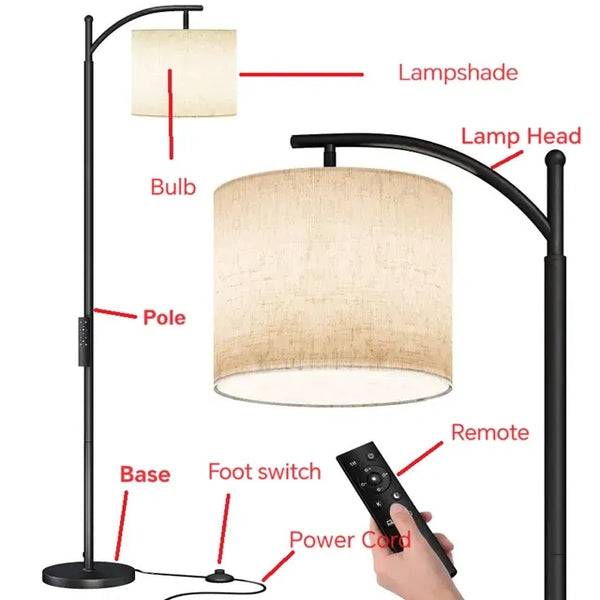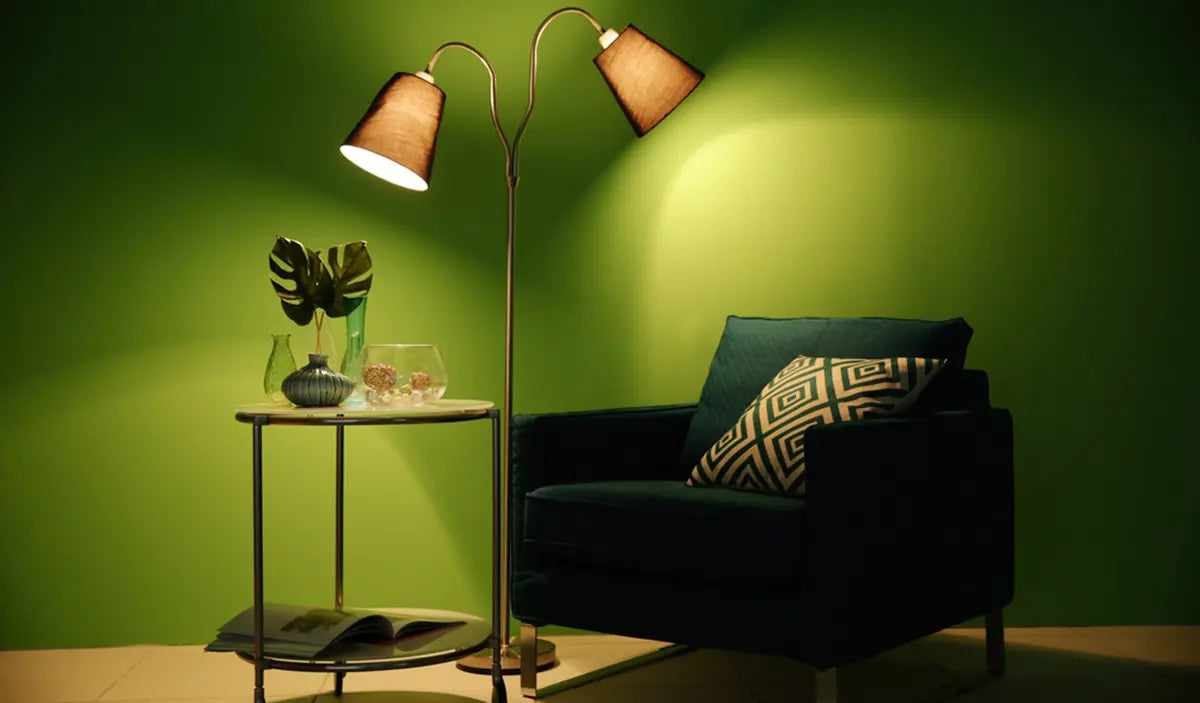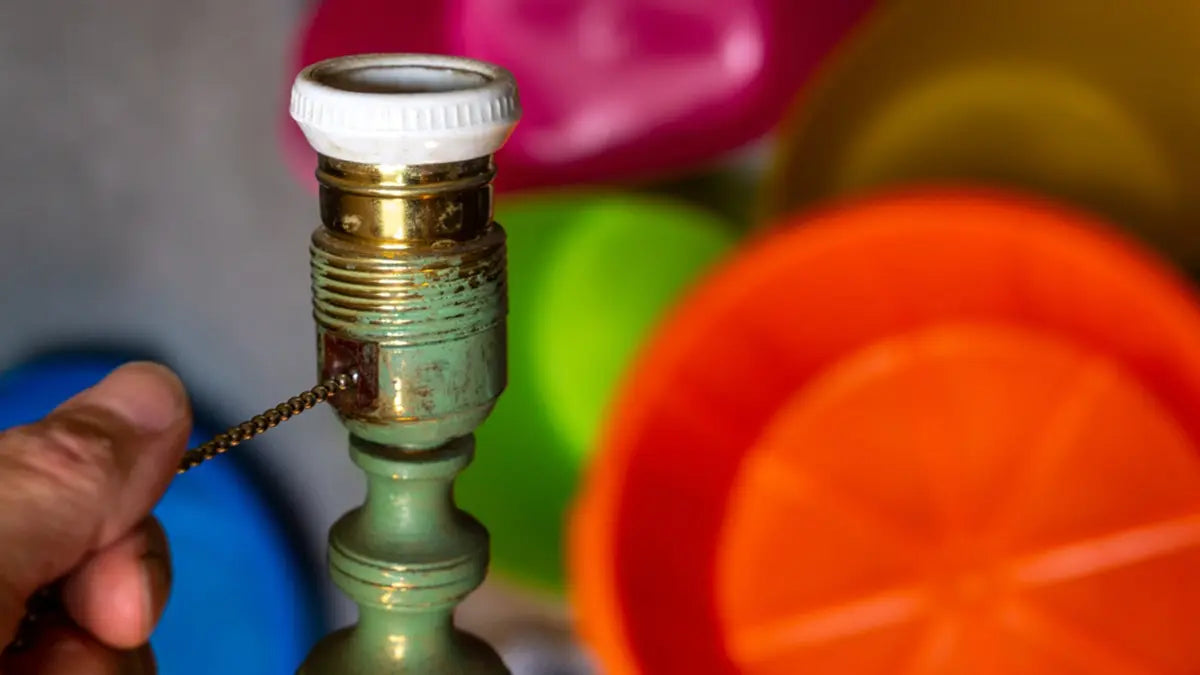Floor lamps do more than light up a room. They're key pieces in home decor.
Ever wonder how they're put together?
Let's dive into the anatomy of a floor lamp and uncover its secrets.
Key Takeaways:
Understanding the parts of a floor lamp—base, pole, lamp head, shade, bulb, switch, and power cord—is essential in home decor.

1. Base
The base acts as the foundation of any floor lamp. Its primary role is to offer stability, preventing the lamp from easily tipping over.
Definition
The base forms the lowermost part of the floor lamp. Stability is its key function. This is crucial for maintaining the lamp's upright position.
Materials
Floor lamp bases come in various materials. Metals provide a sleek, modern look and are quite heavy, aiding in lamp stability. Wood adds a warm, natural touch to your space, bringing a sense of organic beauty. Plastic bases, meanwhile, offer versatility and are lightweight, suitable for less frequented areas of the home.
Design
The design of the base can significantly influence a lamp's overall look and its balance. Sleek designs fit well in minimalistic decor, whereas ornate bases can add a touch of elegance to a room. The design's impact on stability cannot be overstated; a wider base usually means a more stable lamp.
Related: How to Fix a Floor Lamp Base - An Ultimate 2025 Guide
2. Pole or Tube
The pole or tube stands as the spine of a floor lamp, creating a bridge between the base and the lamp head.
Materials and Size
Materials: The choice of material for the pole can vary widely. Metal poles are popular for their durability and sleek finish, fitting seamlessly into modern decor. Wooden poles bring a rustic or Scandinavian touch to interiors, embodying warmth and nature. Each material introduces a distinct character to the floor lamp.
Size: The height of the pole directly influences the lamp's reach and area of illumination. Taller designs are suited for general lighting, while shorter poles may cater to focused tasks like reading. The versatility in pole size allows floor lamps to serve various purposes across different settings.
Related: Step-by-Step Guide: How to Fix a Floor Lamp Pole
3. Lamp Head or Fixture
The lamp head or fixture is important for both the function and appearance of a floor lamp. It holds the light bulb and supports the lampshade.
Definition
The fixture is the uppermost component of the floor lamp. It's where illumination originates, and often, where the lampshade connects.
Types
Fixed Heads: These are stationary, directing light consistently in one direction. Ideal for accent lighting, they illuminate specific areas or objects.
Adjustable Heads: Offering versatility, these heads can be repositioned to change the light's direction. They're perfect for reading or tasks requiring focused light.
Discover how our multi-light floor lamps offer unparalleled versatility in lighting design, perfect for both ambient and task lighting needs in any room.
Functionality
The design of the lamp head impacts how light is distributed throughout a space. Fixed heads provide a steady, unwavering light source. In contrast, adjustable heads allow for targeted lighting, making them adaptable to various needs. This functionality is essential for creating the desired ambiance or focus in a room.
4. Lamp Shade
The lamp shade plays an important role in how floor lamps function and look, by controlling how light is spread out.
Purpose
A shade primarily softens the light, creating a comfortable ambiance. It minimizes glare, making spaces more inviting and easier on the eyes.
Materials and Shapes
Materials: Shades are made from a variety of materials, each affecting the light's quality. Fabric shades cast a soft, diffused light, ideal for living spaces. Paper shades offer a gentle glow, enhancing warmth and coziness. Metal shades focus light directly, suitable for tasks or highlighting areas.
Shapes: The shape of the shade also influences the lighting effect. Drum shades offer a contemporary look, casting light evenly above and below. Cone-shaped shades focus light downwards, perfect for reading. Bell shapes spread light for a softer, ambient effect.
Selection Tips
Choosing the right shade involves more than just aesthetics. Consider the room’s purpose.
For a study, a transparent or semi-opaque shade might be best, offering ample light without harshness. In a bedroom, a darker, more opaque shade creates a relaxed atmosphere. The shade's material and shape should align with the room's existing decor for cohesion.
Related: How to Choose Lampshade for Floor Lamp: Ultimate Guide
5. Bulb
Choosing the right bulb is pivotal for optimizing a floor lamp's functionality and energy efficiency.
Types
LED Bulbs: Stand out for their efficiency and lifespan. They serve a wide range of lighting needs with variable brightness and color temperatures.
Halogen Bulbs: Provide bright, white light, closely mimicking natural daylight. Ideal for tasks requiring precision and clarity.
Fluorescent Tubes: Known for their energy-saving qualities and broad light coverage, suitable for general ambient lighting in larger spaces.
Incandescent Bulbs: Classic bulbs that produce a warm glow, enhancing cozy and intimate environments.
Energy Efficiency and Brightness
Energy efficiency varies significantly across bulb types. LED and fluorescent bulbs are great for saving energy and last longer, so you won't have to replace them as often. The choice of brightness, measured in lumens, should align with the room's purpose. A brighter light is preferable for reading or detailed tasks, whereas softer lighting suits general ambient needs.
Replacement Guide
To replace a bulb, follow these steps:
- Turn off the lamp and let the bulb cool.
- Gently remove the lampshade or any bulb cover.
- Unscrew the old bulb counterclockwise.
- Screw in the new bulb clockwise until snug.
- Reattach the lampshade or bulb cover.
6. Switch and Power Cord
Understanding the switch and power cord of a floor lamp enhances usability and safety.
Switch Types
Floor Switches: Activated by foot, these are convenient for lamps placed behind furniture or in hard-to-reach areas.
Pull Cords: Add a classic touch, allowing for easy on/off functionality with a simple pull.
Rotary Knobs: Mounted on the lamp body or head, they provide a traditional twist action to control light intensity.
Power Cord
Length: The power cord length is crucial for placement flexibility. A longer cord offers more freedom in positioning the lamp away from power outlets.
Safe Use Guidelines: Ensure the cord is not stretched across walkways to avoid tripping hazards. Regularly check for frays or damage to prevent electrical risks. Use a surge protector to safeguard against voltage spikes.
Related: 2025's Ultimate Guide on How to Hide Floor Lamp Cords
Final thoughts
When selecting or maintaining a floor lamp, considering its components is crucial.
We invite you to share your experiences or queries about floor lamps.
For more insights and a deeper dive into the world of floor lamps, visit Sunmory's collection. Your next floor lamp adventure starts
Further Reading
How to Rewire a Floor Lamp: A Step-by-Step Simplified Guide









1 comment
Dr. Walter E Moore
We have a summery 3 light arc floor lamp we need some parts the curved rods and connectors they were damaged
Leave a comment
All comments are moderated before being published.
This site is protected by hCaptcha and the hCaptcha Privacy Policy and Terms of Service apply.